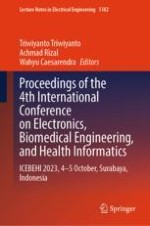2024 | OriginalPaper | Chapter
Automatic Obstructive Sleep Apnea Identification Using First Order Statistics Features of Electrocardiogram and Machine Learning
Authors : Aida Noor Indrawati, Nuryani Nuryani, Wiharto Wiharto, Diah Kurnia Mirawati, Trio Pambudi Utomo
Published in: Proceedings of the 4th International Conference on Electronics, Biomedical Engineering, and Health Informatics
Publisher: Springer Nature Singapore
Activate our intelligent search to find suitable subject content or patents.
Select sections of text to find matching patents with Artificial Intelligence. powered by
Select sections of text to find additional relevant content using AI-assisted search. powered by
